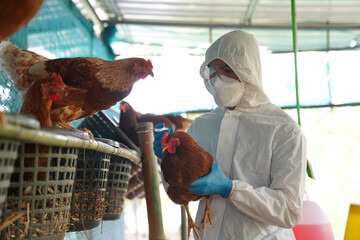Grocery prices soar and supply chains experience backlogs amid coronavirus pandemic

(Natural News) As the coronavirus (COVID-19) pandemic spread throughout America during the first half of 2020, worried citizens flocked to stores to stock up on essential supplies. Shoppers bought items like canned soup, cleaning supplies and toilet paper in bulk, emptying grocery shelves due to worries that they might not have enough to last until the pandemic ends.
Five months after the pandemic forced the country to adapt to the “new normal,” data from a market research firm suggests that while supplies of items that were popular during the first half of 2020 are now easier to come by, America may still experience the scarcity of other grocery items as the pandemic continues to cripple the supply chain.
From bad to worse
According to IRI, a renowned market research company, supplies of staple goods are currently recovering. However, grocery shelves are still mostly empty than they were before the pandemic began.
The company warned that consumers should brace themselves as the worse was yet to come.
Coronavirus continues to skyrocket in certain states, and grocers are reporting a new increase in the purchase of staples that could once again cause a shortage in stores across the country.
Shoppers are also buying more kitchen staples like baking ingredients and paper towels. The increased demand has made it hard for manufacturers to produce the items fast enough to ensure that store shelves stay full.
Mostly empty store shelves may be a normal sight during the pandemic
To meet increased consumer demand due to the coronavirus pandemic, manufacturers of food, beverages, paper products and cleaning supplies increased production during spring to give grocers a chance to refill store shelves.
At the peak of worried shoppers cleaning out stores near the end of March, stores in the country sold out on at least 13 percent of items on average. For August, about 10 percent of store items remain out of stock.
The normal range of out of stock items was only from five to seven percent before the pandemic.
The numbers seem small, but research from trade associations suggests that it would cost the supermarket industry a whopping $10 billion in lost revenue to keep store shelves at least 90 percent full for half a year.
This means grocery shoppers with about 20 items on their list would be unable to find two items in one store. Shopper surveys have found that if buyers can’t find all the items they need in one location, they will move on to a different store.
A retailer missing some items from their store shelves could also lose this customer to their competitors for good.
According to estimates from the IRI, these popular grocery items were back in store shelves by August:
- Cookies and crackers
- Dairy
- Frozen fruits and vegetables
- Laundry products
- Over-the-counter medicine
- Paper products (e.g., paper towels and toilet paper)
However, these items are still hard to find as manufacturers struggle to meet consumer demand:
- Barbecue tools
- Breakfast foods
- Canned vegetables
- Coffee and tea
- Frozen meals
- Frozen meat, poultry and seafood
- Household cleaning products
- Household plastics and storage products
- Office and school supplies
- Pest control
- Refrigerated dough
- Vitamins, weight loss products
Out of stock items and increasing prices
Because of the pandemic, manufacturers and retailers are working to make, deliver and stock up on in-demand items. However, this can lead to out-of-stocks of niche or seasonal items, like barbecue equipment and tools.
Other grocery aisles have mostly empty shelves since the sector is unable to produce enough items. This includes flour mills that are behind on deliveries even after increasing production by at least 40 percent during the pandemic.
Ken Romanzi, B&G Foods Inc.’s Chief Executive, shared that once spikes in Covid-19 cases have forced some states to delay their reopening plans, grocery makers and retailers were also in a bind: As demand for certain products increases, it became even harder to produce extra stock.
B&G Foods, the producer of Green Giant canned and frozen vegetables, said it exhausted its supplies in the spring. Despite working to produce more items, the company is unable to make extras to stay ahead of another wave of shutdowns.
Other manufacturers like Campbell Soup Co., General Mills Inc. and Kimberly-Clark Corp. are also having trouble rebuilding inventories due to increased demand post-pandemic.
Purchase limits and reduced shopper discounts
Before the coronavirus pandemic hit the country, stores enticed shoppers by offering discounts and promos on various goods.
However, from March to July of this year, manufacturers and retailers reduced discounts. This meant stores have had to increase the prices of food and household goods and enforce limits on popular items like pasta and paper towels. (Related: Coronavirus causes food prices to soar to record highs.)
But retailers are hopeful since promotions have made a comeback this summer, which helped average price increases slow from May. The IRI reported that store prices are still five percent higher on average than a year ago.
Usually, inflation would cause a two percent increase.
Strangely enough, some categories are offering more discounts compared to before the pandemic began. For example, grooming-supply companies are trying to improve sales since consumers have prioritized other needs over their appearance.
In the same vein, sports and energy drinks offered more during the peak of the pandemic since gyms were closed and people didn’t frequent convenience stores as they normally did.
Manufacturing updates
The pandemic resulted in nonessential businesses being shut down and total manufacturing in the country has significantly slowed.
While factories churning out food and other items for grocery stores increased their capacity from 10 to 40 percent, others producing large quantities for hotels, restaurants and schools reduced their output as they couldn’t produce retail-sized products.
Overall, factories producing food, paper products and cleaning supplies didn’t experience a pandemic-related disruption compared to other industries like autos and appliances.
What does this mean for the average shopper? If your supplies are already running low or you want to prepare before your state goes into lockdown, below are items that you should stock up on before the nearest grocery store runs out of items (again).
Food
- Canned vegetables (low-sodium)
- Canned fruit
- Dairy like cheese and milk
- Dried fruit
- Frozen fruit
- Healthy fats such as chia seeds and olive oil
- Jarred salsa and tomato sauce
- Protein like chicken, tuna, seafood, lentils and nuts
- Grains like brown rice, oats and whole wheat
Cleaning products and toiletries
- Alcohol solutions with at least 70 percent alcohol
- Bleach
- Floss
- Hand sanitizer with at least 60 percent alcohol
- Hand soap
- Razors and shaving cream
- Shampoo and conditioner
Stay informed and visit Pandemic.news for more updates on the Wuhan coronavirus pandemic.
Sources include:



